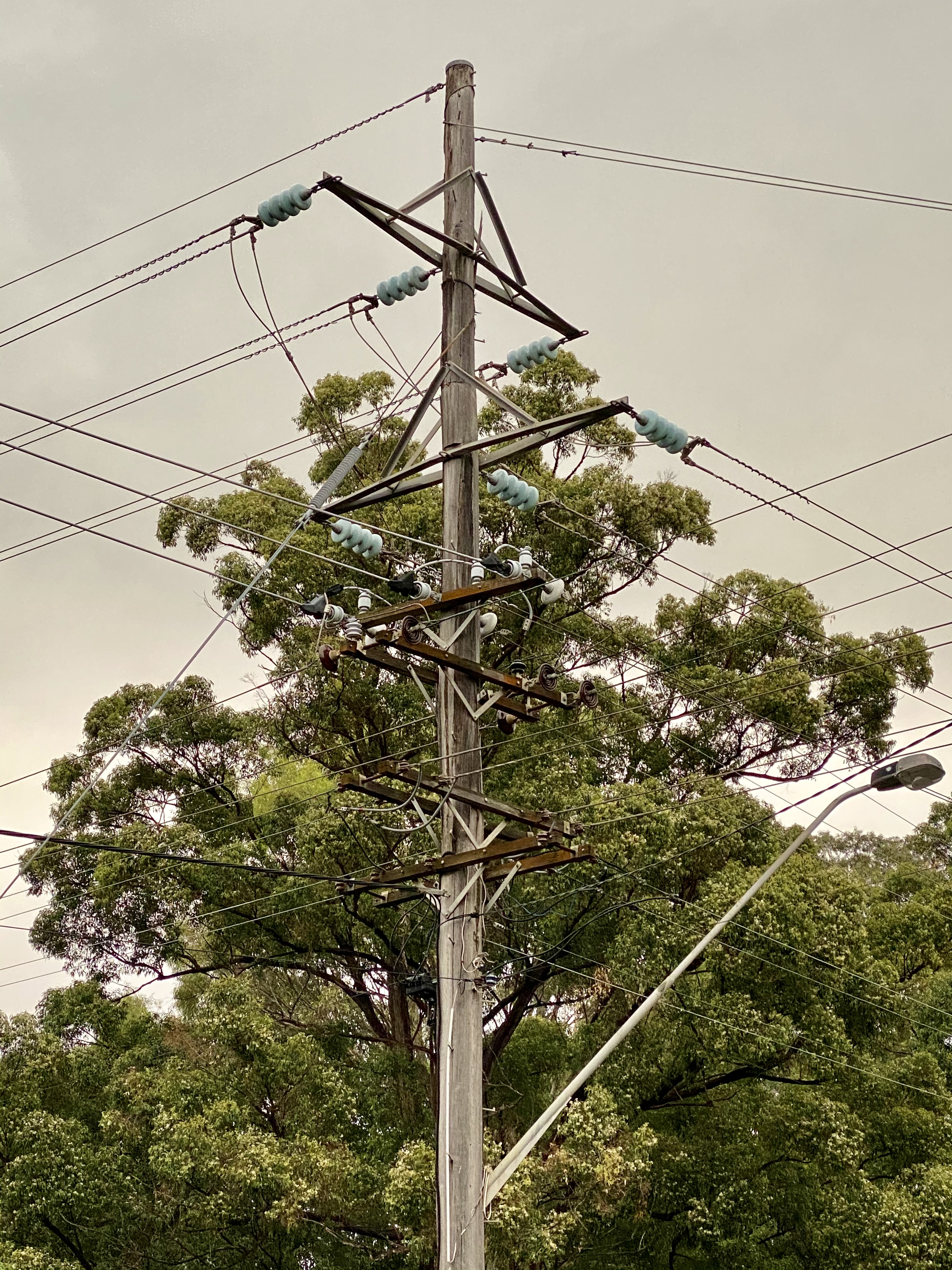During a weekend dinner at my in-laws’ place, I briefly left to take containers of leftovers home—as is the custom—around the corner before returning for dessert. After placing things in the fridge, locking my door, walking down the driveway and crossing the road, I strolled over to the street corner to start climbing the hill back to their house. As I looked up, I saw this and stopped.

From where I was standing, the power pole and lines stood perfectly in front of a taller eucalyptus tree across the road, however the tree appeared to be dwarfed by the pole. I stood and stared at this scene of visual overload.
This moment captures a thought that I often have as I go for lunchtime walks through our suburb (still working from home): the strange balance of power that we humans hold in our built environment and the way that we regard our own creations to be greater than nature’s. We think of our technology as being elegant and ingeniously interconnected but compared to the natural environment, it is messy, clunky and destructive. The ‘cloud’ that we imagine is actually energy-intensive and mechanical, rather than the invisible phenomenon that we imagine holding all of our photos. The processes of the tree behind this pole and all of the matter and animals that surround it—indeed, real clouds too—are subtle, gradual and purposeful. We barely perceive the wonderful non-human ecology that sustains us and everything else on the planet. The best that we can do in taking notice is capture it in quantified weather reports and wonder whether it will ruin our weekend get-together.
I watch people buzzing around every day as I venture out, whether they’re speeding down the street in their cars, walking dogs with faces in their phones or staring at their feet as they amble along, wearing earphones that blast music. They rarely stop to look around at the environment that they take for granted. Tall trees tower above suburban houses in isolated parks, preserved only in small patches because they line a waterway that needs to exist to avoid flooding elsewhere in the area. With that gone, developers would surely be in there in a heartbeat. Everything else is paved or set aside only to be a mowed lawn. Competing in height are the power lines, which while not as crucial as the oxygen-supplying trees that dot the well-established suburb, do provide the crucial energy that keeps the aforementioned human activity going.
We clear trees to make space for the erection of uglier trees that are made out of the dead trees that we cleared. I often walk through my suburb and ponder what it looked like before it was developed and even before it was farmland. The place where I sleep every night—what did it look like when it was just bush for thousands, millions, billions of years? Who or what was here before I was? Yet I can’t help but feel that people, when they do take notice of such things, are more impressed by the ugliness and interconnectedness of what humans create, rather than the ecology of what they destroyed. They don’t contemplate the age of what surrounds them. They struggle to comprehend a time before their own birth.
Every day, I take my lunchtime walks through nearby parks not only for a sense of fitness, but to remove myself from technology (to a degree, with the occasional podcast) and surround myself with a more natural environment that’s separate from human hubris… even if it is an enclave within a suburban sprawl.
This post says hardly anything new about humanity’s relationship with nature; I write this to encourage others to take notice of what is around them.
·
[…] may recall that late last year I wrote another blog post about noticing trees, only a short time before this vandalism took place. When it comes to the council’s claim that […]